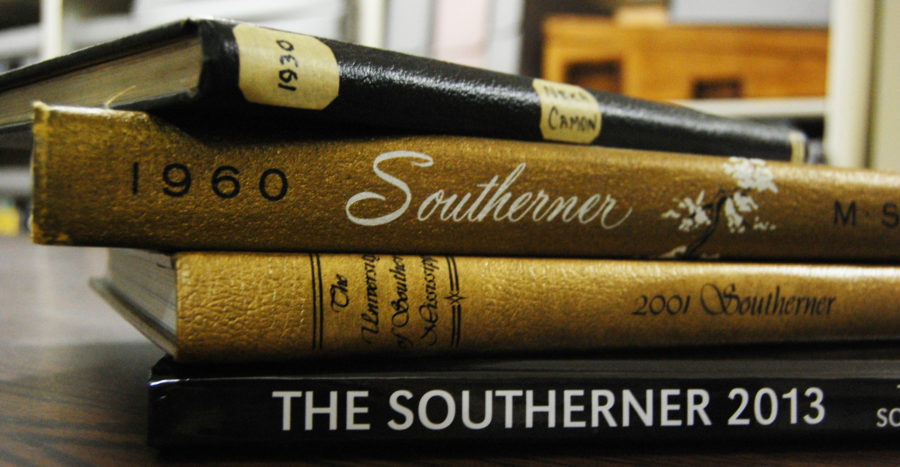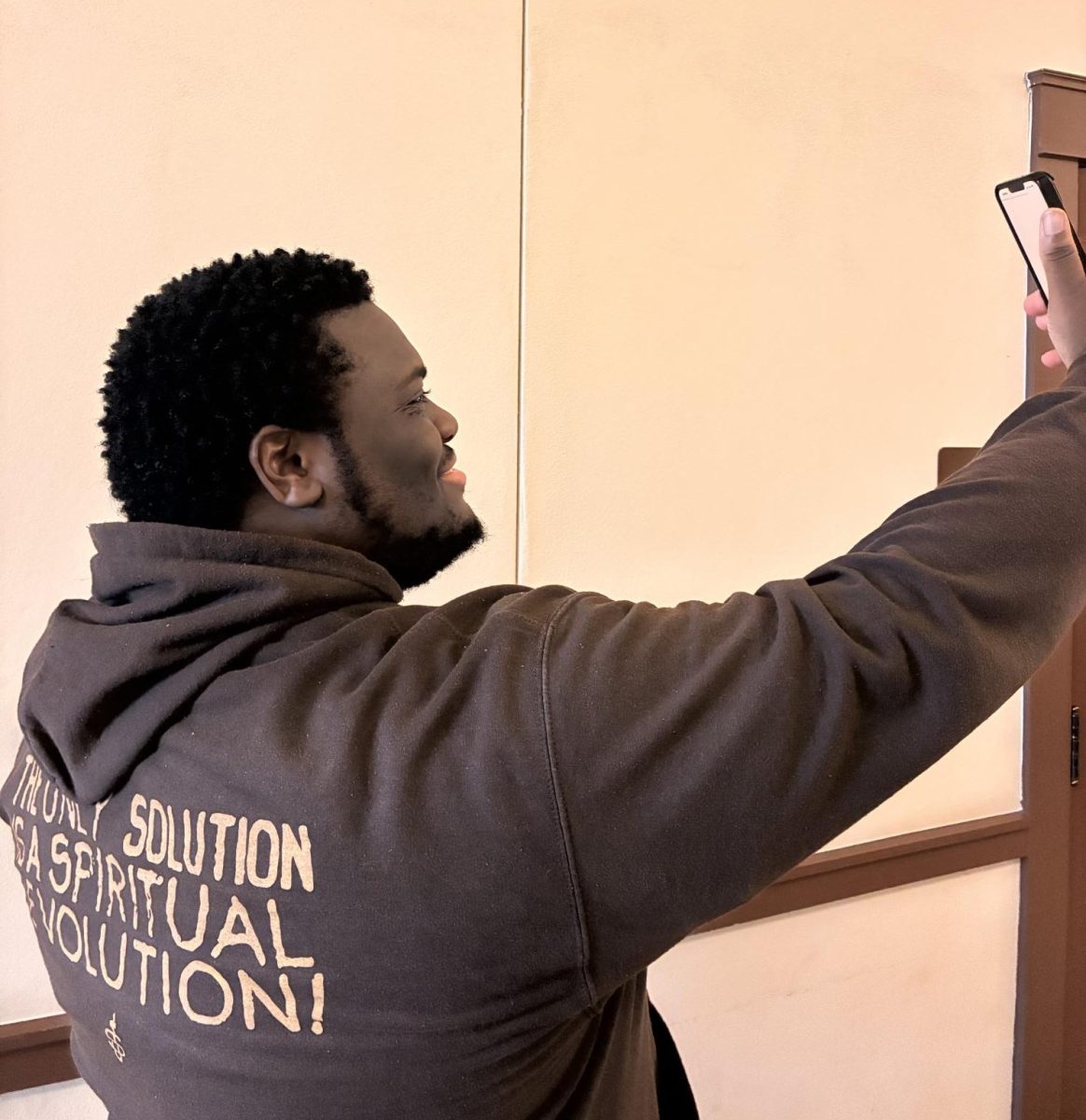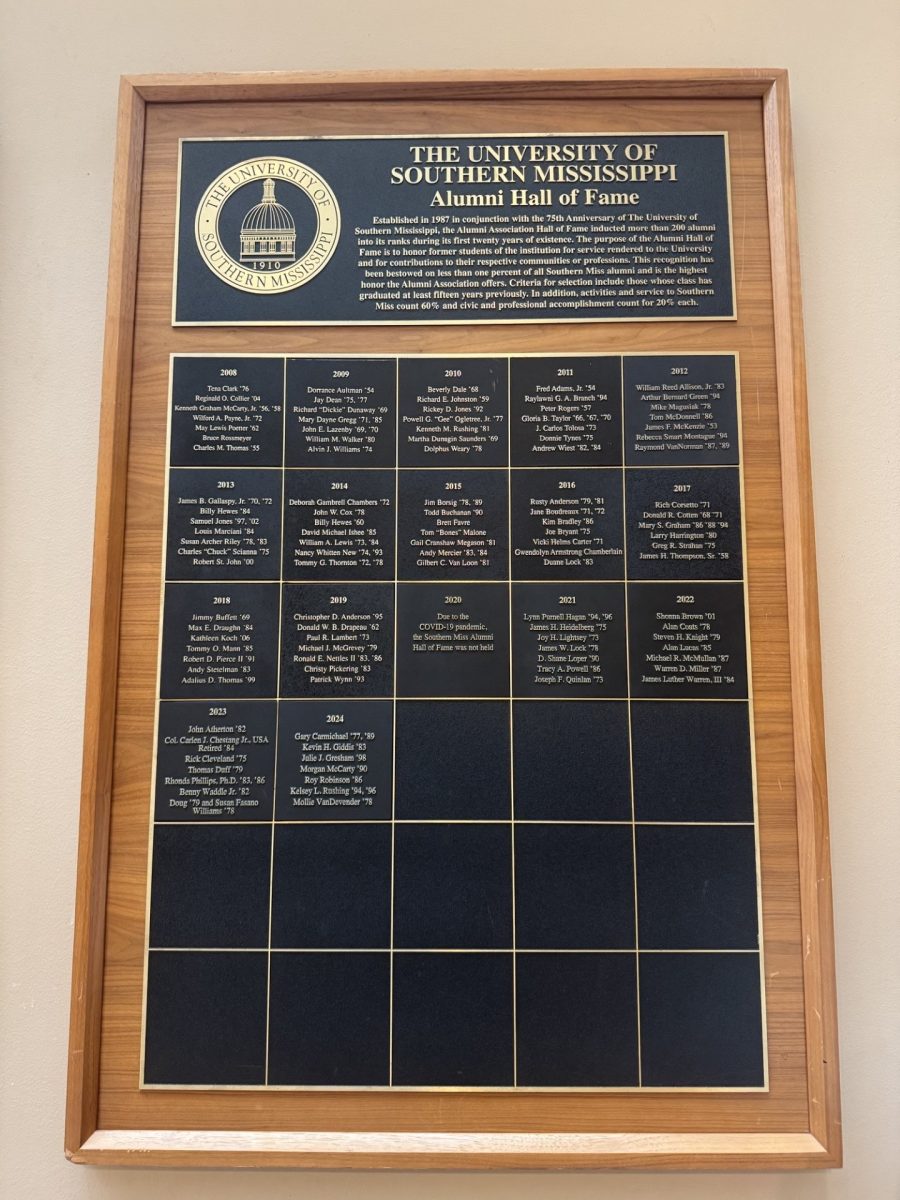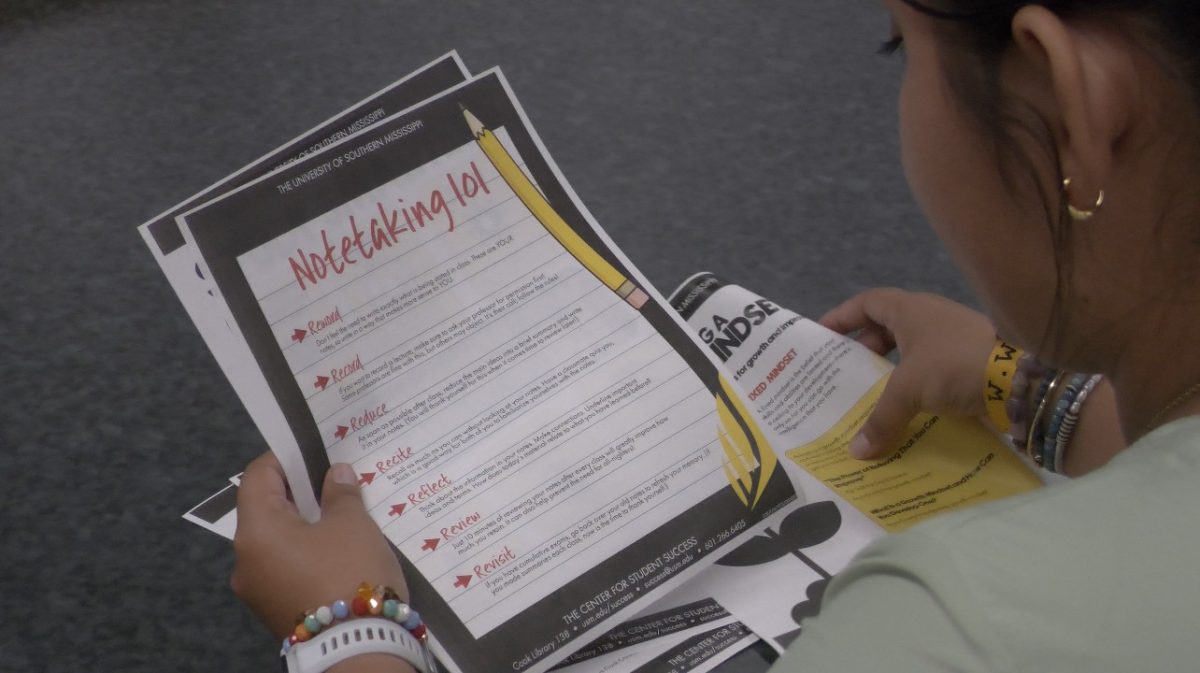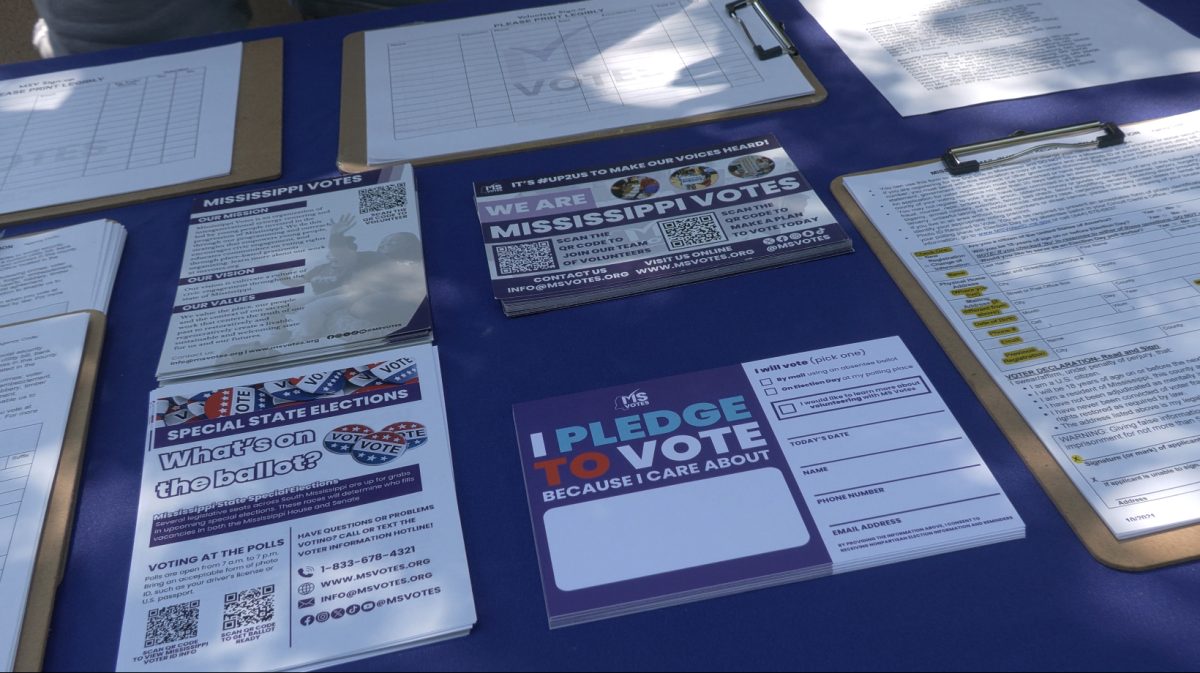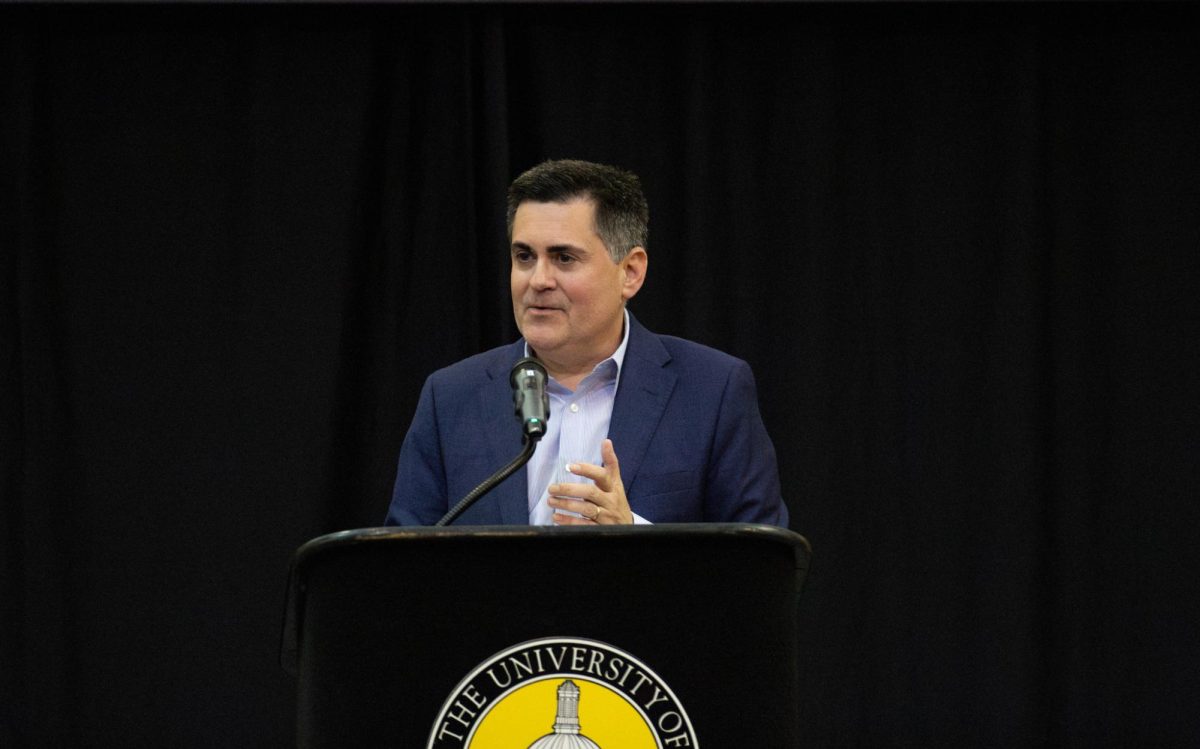Caption: The Southerner yearbook dates back to 1914, when it was titled Neka Camon. The 2015 publication will be the university’s last due to recent budget cuts. Mary Sergeant/Printz
The Southerner cut due to budget crunch
In April 2015, the 79th volume of The Southerner yearbook will become available for students at The University of Southern Mississippi.
But, due to recent campus-wide budget cuts, the 79th volume will also be the school’s last.
Vice President of Student Affairs Joe Paul was put in charge of a 4.5 percent budget reduction under his division. Student affairs ranges from counseling services to student recruitment to the The Southerner.
According to Paul, the student affairs budget is currently $4 million and of that, about $3.2 million is personnel. The operating budget for The Southerner was approximately $70,000.
Paul asked that each department head under his division design a budget cut, cutting 4.5 percent from their given budget. After carefully analyzing each division’s suggestions and budgets, he came to his conclusion.
Of his 21 years of serving in his position, Paul said the decision to end The Southerner was one of the more difficult decisions he has had to make.
“One, I appreciate the recorded history of the university,” he said. “And, two, the most painful part for me was there are 21 students on staff and there are 20 other students out there who won’t have their same experience.”
Current executive editor of The Southerner Kayla Patak is also disappointed about the recent changes.
“Southern Miss is built on tradition and I’m sad to see a cornerstone of our campus go away due to financial hardship,” she said. ”But I understand the state of our economy and know it is essential for the success of our university.”
Taylor Bostick worked on The Southerner staff during all four years of his undergraduate career, and in 2011, he was named executive editor. Today, Bostick works as a page designer and copy editor for the Sun Herald in Gulfport.
According to Bostick, the news that this volume of The Southerner will be its final publication did not come as a surprise.
“It was never a matter of if, it was a matter of when,” he said.
During Bostick’s years on staff, he saw budget cuts affect them multiple times. Because of these cuts, payroll was changed, printing companies were switched and other measures were taken to keep the yearbook afloat.
USM’s first yearbook dates back to 1914, and at that time it was titled Neka Camon, which means “the new spirit” in a Native American language. From there, the yearbook went through multiple name changes until it was permanently titled The Southerner in 1947.
Throughout its history, The Southerner has suffered due to financial struggles and other events in the nation’s history. From 1918 to 1919, it was not published because of World War I.
Then, from 1932 to 1937, the yearbook took another break from printing. According to Southern Miss archives, this could have been due to the Great Depression and the flu epidemic. Since 1947, The Southerner has continued to be published every year.
“It’s amazing how much the yearbooks are used by researchers,” said Cindy Lawler, assistant curator for historical manuscripts and archives in McCain Library.
Lawler also mentioned that Chester Morgan, the author of “Treasured Past, Golden Future: The Centennial History of The University of Southern Mississippi,” used the yearbooks as sources for his publications.
In a story written in 2010, NPR said that about 1,000 yearbooks were still printed nationwide. That is 1,400 less than those printed in 1994.
Former USM student, Kelly Price began working as a member of The Southerner staff in fall of 2010 as a photographer. Like Bostick, Price was named executive editor her senior year. Currently, Price works as the athletics support assistant for the University of Alabama’s Athletic Photography Department.
According to Price, the University of Alabama has also recently cut their yearbook, The Corolla, out of its budget due to a decline in yearbook sales.
“I know budget cuts are always a concern, but the university is doing away with an important historical document,” she said. “It’s a shame we’re heading into an age where print publications are becoming seemingly obsolete.”
Price also expressed her concern that this is only the beginning, for she fears the end of The Southerner will create a snowball effect, eventually ending other print publications on campus.
According to the Washington Post, “college yearbooks have been slowly disappearing as campuses expand and diversify and students’ lives move online, away from paper records of their college memories.”
This year, The Southerner is being sold for $20. In 2013, according to Joe Paul, roughly 300 were sold to students.
Emily Holmes, assistant director for student activities and the adviser for the yearbook, said they have chosen to order a limited number of copies due to lack of interest in recent years.
“If the demand is not there and the money isn’t coming in to supplement the budget, it’s inevitable we are going to hit a rough patch,” she said.
Students can still purchase copies of The 2014-2015 Southerner in the Student Activities Hub at any time.
For more information regarding The Southerner, contact Kayla Patak at [email protected].

























